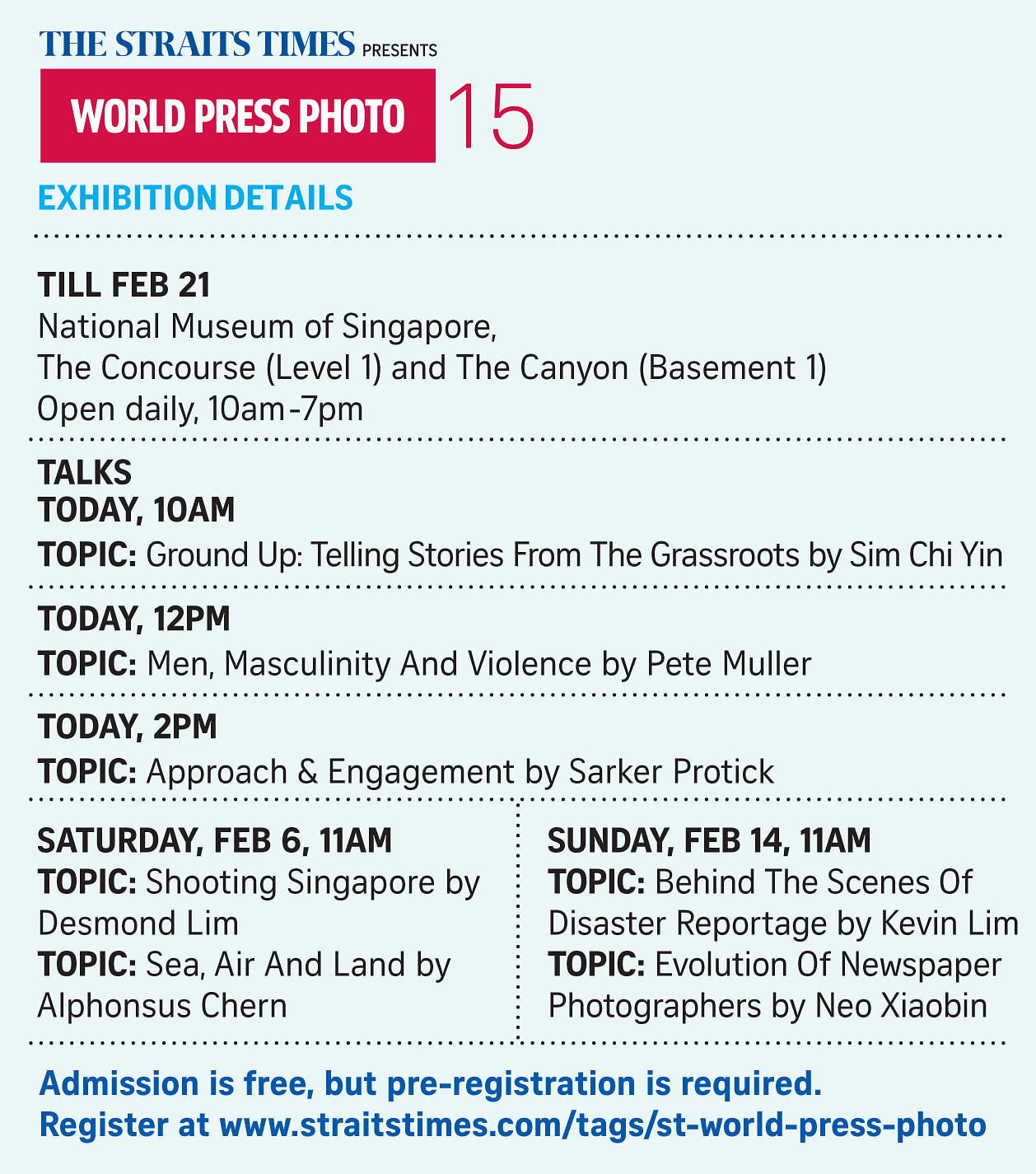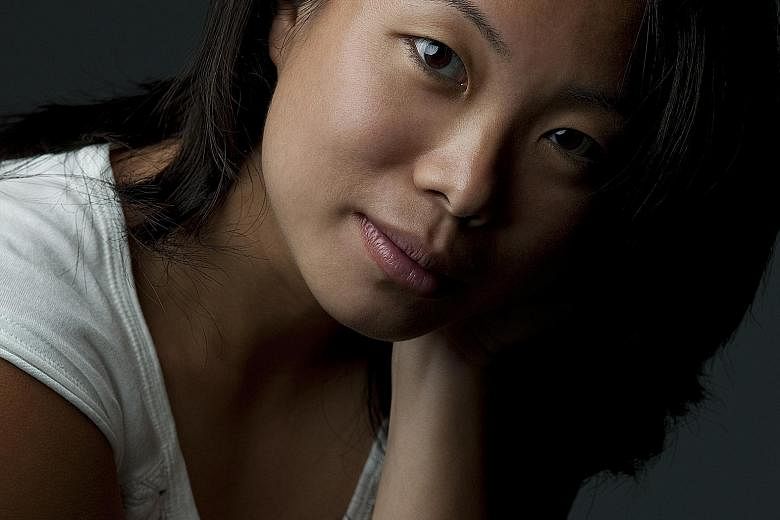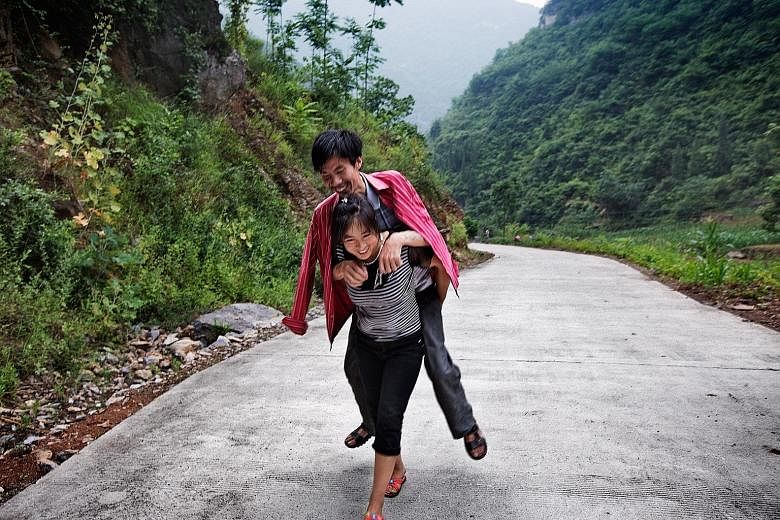"A world-famous photojournalist and a human rights activist."
This was what a classmate in National Junior College had predicted for Sim Chi Yin, written down on a Filofax page 20 years ago.
It could not have been more accurate. Sim, 37, is now an award-winning photojournalist focusing on social issues in Asia, doing photography, video and multimedia commissions for major publications such as Time and The New York Times.
She is represented by the prestigious New York-based VII photo agency.
Next month, she joins the 2016 World Press Photo contest as a jury member. This year's photo contest will be chaired by Francis Kohn, photo director of Agence FrancePresse.
She is the third Singaporean to be part of the jury after Ms How Hwee Young last year and Mr Wee Beng Huat in 1985 and is looking forward to an intense week of debates and discussions with fellow jury members from both journalism and art backgrounds. Mr Wee was then group picture editor of The Straits Times, while Ms How is European Pressphoto Agency's chief photographer for China.
"I think it'll be an amazing experience seeing the spectrum of documentary photography that has been produced in the past year," she says.
Her work is driven by a sense of social justice, whether in photographing Chinese miners affected by silicosis - an occupational lung disease caused by the prolonged breathing of coal mine dust - in Dying To Breathe, a four-year personal project released last year, or in The Long Road Home that was published in 2011, in which she documented the lives of Indonesian women migrant workers.
Sim's father is a retired teacher and her mother, who is also retired, used to run a childcare centre.
Describing herself as "obsessed with the idea of usefulness" in her late teens, she says: "I knew exactly how I wanted to be a useful person in society and how I would live it out - through writing and photography."
For her, advocacy and journalism go hand in hand. "Photography and art are very good ways of surfacing some of those hard issues in a softer kind of way."
She notes that in many countries, photographers, artists, film-makers and writers are often the ones at the forefront of surfacing social issues and getting them into the public consciousness.
She read history and international relations degrees at the London School of Economics and Political Science. Based in Beijing since 2007, she was a journalist and foreign correspondent for The Straits Times for nine years before quitting to pursue her first love - photography.
In the five years since going freelance, the petite photographer received the Her World Young Woman Achiever award in 2014 and was on the British Journal Of Photography's One To Watch list of photographers. In 2013, she was among PDN's 30 - Photo District News' top 30 emerging photographers, as well as a finalist in the W. Eugene Smith Grant in Humanistic Photography.
Accolades aside, the path of a freelance documentary photographer is not an easy one.
The past year was challenging. In May, her right thumb was dislocated and her ligament torn when North Korean workers in north-east China attacked her for photographing them on assignment for Le Monde, a French daily newspaper.
She has undergone two operations - the most recent during this month, when a new ligament for her thumb was micro-reconstructed using a piece of tendon from her right wrist. The whole area had scarred over and fused following the first surgery in Hong Kong last June.
It is the first time that she has suffered a major injury and she doubts she can recover her full thumb function.
A business travel insurance that Le Monde bought covered her surgery in Hong Kong. The newspaper also paid her for three months of lost work. But rehabilitation was not taken into account by the insurer and newspaper and she had to pay for subsequent treatment.
While the injury made her rethink some of the assignments "where one can expect confrontation in a not so fruitful way", it has not made her rethink her career choice.
While her injury has laid her off for most of the past six months and full recovery will take another six to nine months, she has not been idling.
She is still trying to go deeper into her family history. Roots: A Granddaughter's Belated Search, a selection of 15 images she made over multiple trips to her ancestral village in Guangdong, China, marks the first chapter of her investigation into her paternal grandfather's history.
It was published last year as part of TwentyFifteen.SG, a collection of 20 photo books published by Platform, a volunteer group that promotes photojournalism.
She is hoping to work on the northern Malaysia and Perak chapter, where her grandfather spent the bulk of his life.
She is also working on VII photo agency's new group project documenting life on China's borders with Asia Society's ChinaFile. She pitched and conceived the project.
Sim, who is single, spent two weeks in Kinmen, where she shot one part of the Taiwan chapter before her second surgery.
"Spaces in between countries and cultures are interesting and China has borders with 14 other countries," she says. "The project also looks beyond physical borders - borders in time, history and culture."
Neo Xiaobin



